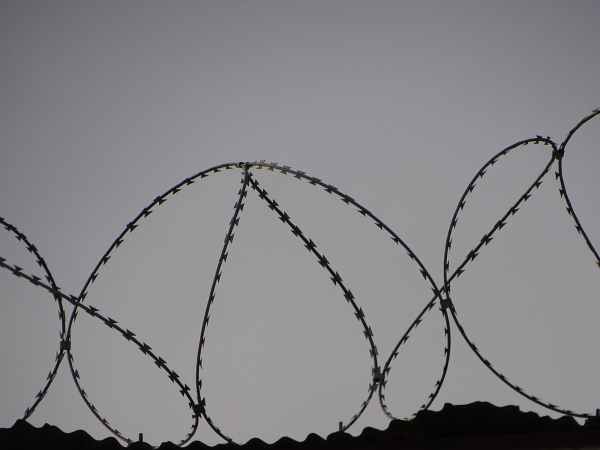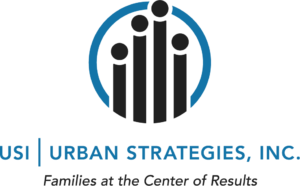This installment speaks to the Results Count framework our organization has adopted as we look at how this often heavy work shows up in our personal mental models we carry within ourselves, how it affects our role at work and ultimately the Juvenile Justice system.
In 2014, legislation was passed in Kentucky to reform the juvenile justice system. Shortly after its passage, I accepted a job that put me in charge of enacting that new legislation for the Kentucky Department of Juvenile Justice. I had been looking forward to the ceremonial bill signing with the Governor for weeks. It was such an exciting thing to get to be part of, an opportunity that the little girl in me, never would have believed would have been true. Girls who come from where I do, don’t do this sort of thing.
When I woke up, on the day of that event, the excitement I felt only days before had been completely quelled by reality. I was going to a ceremonial bill signing of legislation to reform the juvenile justice system, while my brother was wanted for robbery; his picture having been splashed all over the news for days.
If there is a more fitting definition of irony I can’t begin to imagine what it might be.
I was in a meeting, only two days before, discussing assessment tools when I found out. My phone buzzed on the table alerting me that I had a message. I waited until there was a lull in the conversation and then mindlessly picked up my phone to see who had issued the electronic summons. My heart sank immediately when I saw the words.
“Have you seen the news?” A simple question followed by an attached video.
 I debated momentarily before opening it. It was never good when people sent me those words. It was never good when those words were followed by a video. It was never good because it always meant that some child that I had known through my years of system work had died…or had done something unthinkable…or had been the victim of something unthinkable. It happened so frequently that I caught myself wondering which child it might be, silently bargaining, even, about which one I might be willing to spare. I muted my phone and hit play. Right there in the room. Right there in the middle of the important work that I was doing. I hit play because I couldn’t not know what or who it was.
I debated momentarily before opening it. It was never good when people sent me those words. It was never good when those words were followed by a video. It was never good because it always meant that some child that I had known through my years of system work had died…or had done something unthinkable…or had been the victim of something unthinkable. It happened so frequently that I caught myself wondering which child it might be, silently bargaining, even, about which one I might be willing to spare. I muted my phone and hit play. Right there in the room. Right there in the middle of the important work that I was doing. I hit play because I couldn’t not know what or who it was.
My heart was beating out of my chest, as I sat there feeling like a little girl again, helplessly waiting for that video to buffer. As the video was buffering I could feel something inside me start to spool.
For just a moment I was back in that old dirty trailer that we called home. The silence that happened just before the yelling was worse than the yelling itself. The silence that happened just before the throwing of plates or the punching of walls was far more painful than any violence I ever witnessed or encountered.
“What is taking so long?” I cussed and brooded, trying to clear my heart from my throat; the pain in my stomach growing stronger by the second.
The anticipation of the thing is always so much worse than the thing.
I felt relief wash over me as the video finally began after what seemed like a lifetime. In an instant, there he was. My brother’s face right on the screen as plain as the last time he sat next to me. Though admittedly, I couldn’t remember how long ago that had been. Scrawled under his face were the words, “Suspect in Robbery. If you have information please call, blah, blah, blah.”
I quit reading. I thanked God that it wasn’t a child I’d worked with and that it was only my brother. I would have to later contend with how I was going to have this conversation with my mother. She is devastated every single time. The sound of a question pulled me back to the room away from the reality of the world from which I come. The world I long ago escaped that sometimes intrudes and runs parallel to the one I carefully crafted for myself.
I was as thankful for the question as anything I can ever remember. I quickly jumped back in role. I’m good in role. It doesn’t come with all the softness that my person brings to the table. So, I put my feelings aside and focused on the task at hand. We had assessment tools to create. We had a juvenile justice system to reform. No time to be worrying about this now 3rd time felon who would undoubtedly be returning to prison a 5th time. (He had committed three actual offenses yet had been returned twice for parole violations.)
Had we grown up today, I feel certain, my brother and I both would have been filtered into some child serving system. I mean the evidence of the need for intervention is right there, in his behavior and my memories. I went to work in the system as a way for me to support children the way teachers and coaches had done for me. As a way to keep others from turning out like my brother. At the time, I held this mental model that systems save children. By proxy, didn’t that mean that I would save children?
The longer I did reform work, the more I learned. The more I learned the more I began to question what I had initially believed with the whole of my heart. If systems save children why then did so many exit those systems and die? Why did so many go on to be homeless? Why did so many go on to live out their lives much like my brother, convicted of crimes and in and out of prison?
The research is clear that the side effects of system involvement have long lasting impacts on children, families, and communities.
For eight years, researchers have followed about 600 young adults who aged out of the child welfare systems in Iowa, Wisconsin and Illinois. The report finds that at age 23 and 24, former foster youth are more likely than their peers to be:
Unemployed — Less than half were employed.
Homeless — Almost 25 percent had been homeless since exiting foster care.
Pregnant — More than 75 percent of young women had been pregnant since leaving foster care.
Convicted of a crime — Nearly 60 percent of young men had been convicted of a crime, and more than 80 percent had been arrested.
Uneducated — Only 6 percent had a 2- or 4-year degree.1
The Quarterly Journal of Economics, “Juvenile Incarceration, Human Capital and Future Crime: Evidence from Randomly Assigned Judges, paper — authored by Brown University’s Anna Aizer and MIT’s Joseph J. Doyle, Jr. which analyzed 10 years of data on approximately 35,000 juvenile offenders in Chicago found that juvenile incarceration decreases the chances of high school graduation by 13 to 39 percent. While it increases the chances of incarceration as an adult by 23 to 41 percent.2
Holy goodness, I didn’t sign up for that. It is an unthinkable kind of pain to learn that the very thing you thought was helping, might actually be causing harm. Inevitably, I fled after 20 long years. I landed at Urban Strategies in February of 2017 looking to finally begin the work I had hoped to be doing all along.
As the Southern Regional Director at Urban Strategies, I get to contribute to measurable results that keep families at the center. Central to Urban’s mission, work is done every day to effectuate change in the very place that can make the biggest impact, within the community itself. Serving 30,000 families which equates to roughly 100,000 individuals, Urban Strategies works in 12 unique communities across 12 major metropolitan areas. We have expertise leading Hope IV, Choice Neighborhood and human capital projects creating sustainable change in resilient communities saturated in unrecognized and untreated complex trauma.
 I am proud to say that from 2013 – 2017, Urban Strategies utilized Public Safety Enhancement grants to supplement our community development work within Alice Griffith in San Francisco and Bienville Basin in New Orleans. These efforts focused on assisting residents with education and school connection, employment, housing stability, correcting literacy issues, connecting individuals to pro-social activities and persons, disrupting harmful cognition, and empowering youth and adults to pro-socially be part of change within their own communities.
I am proud to say that from 2013 – 2017, Urban Strategies utilized Public Safety Enhancement grants to supplement our community development work within Alice Griffith in San Francisco and Bienville Basin in New Orleans. These efforts focused on assisting residents with education and school connection, employment, housing stability, correcting literacy issues, connecting individuals to pro-social activities and persons, disrupting harmful cognition, and empowering youth and adults to pro-socially be part of change within their own communities.
In addition, both sites put a heavy focus on supported re-entry for individuals returning from incarceration. Our approach was based off the research by Andrews and Bonta (2010)3 identifying the Central Eight criminogenic needs that put individuals at-risk of criminal behavior. The payoff of this work has been a 22% decrease of Part 1 Crimes in Alice Griffith in 2016 and a decrease in overall crime in Bienville Basin in 2017 by 29%.
My person is no longer hiding out in role drowning in a sinking system. She is knee-deep in the work, proud of the difference made. And for the first time, in a long time, with the whole of her heart, she knows that it is right.
About the Author: Kristie G. Stutler is a Regional Director for Urban Strategies, Inc. She has a Masters of Science in Social Work, 16 years of experience working with system involved youth, and 3 years of experience working in juvenile justice reform. She is a Class 10 Fellow in the Annie E. Casey Children and Family Fellowship, a trainer, a writer, and a lover of all things that rhyme…
References
- http://www.npr.org/templates/story/story.php?storyId=125594259
- http://org/studies/government/criminal-justice/juvenile-incarceration-long-term-consequences
- https://files.eric.ed.gov/fulltext/EJ1017929.pdf
